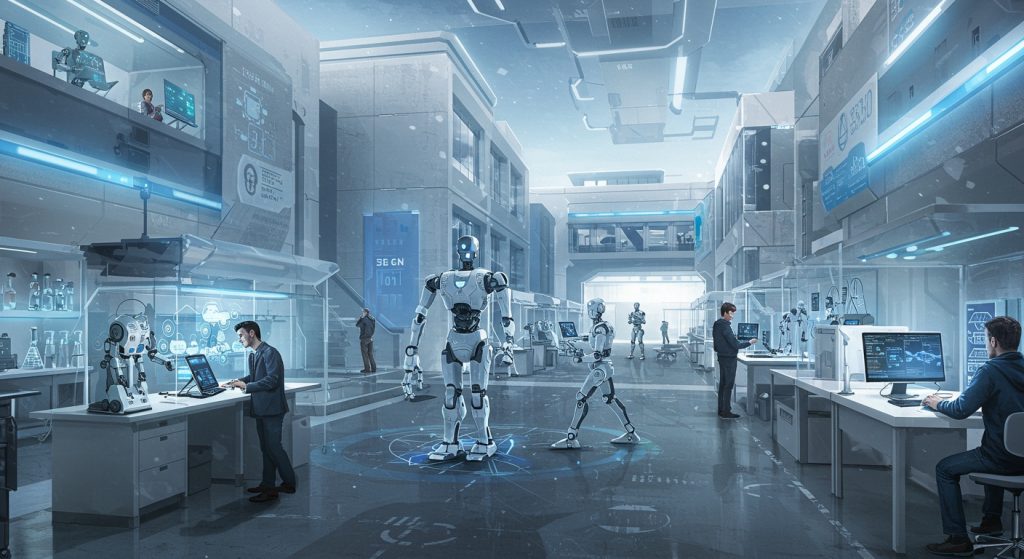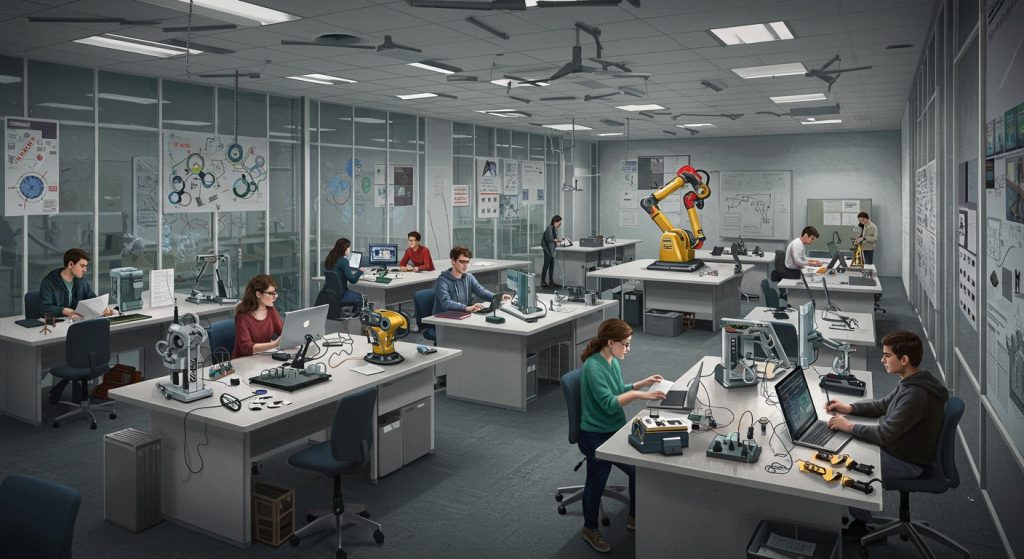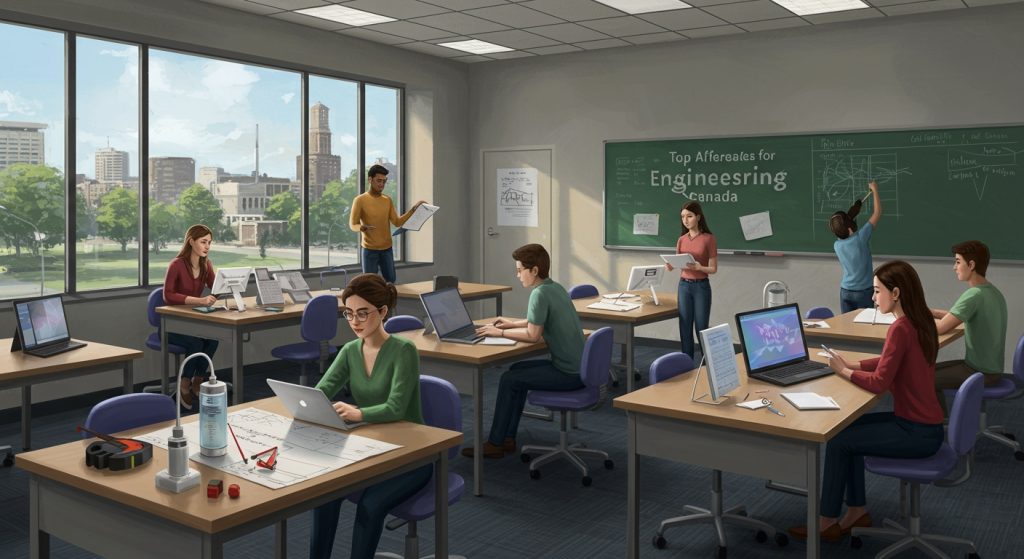Artificial intelligence and robotics are no longer futuristic concepts; they are reshaping industries globally. The escalating demand for skilled engineers has spotlighted universities as crucial innovation incubators. We explore the leading academic institutions worldwide – from Carnegie Mellon’s robotics institute to ETH Zurich’s autonomous systems lab – at the forefront of AI and robotics research. Discover how these global engineering hubs are pioneering advancements in areas like machine learning, computer vision. Human-robot interaction. Uncover their unique research focus, industry collaborations. How they are preparing the next generation to tackle complex real-world challenges, driving the fourth industrial revolution.
Global Engineering Hubs: Universities Leading in AI and Robotics Research
Understanding AI and Robotics: Key Definitions
Before diving into the leading universities, let’s define the core concepts:
- Artificial Intelligence (AI): The ability of a computer or a robot controlled by a computer to do tasks that are usually done by humans because they require human intelligence and discernment. This includes learning, reasoning, problem-solving, perception. Language understanding.
- Robotics: The branch of technology that deals with the design, construction, operation. Application of robots. Robotics integrates AI to create intelligent machines capable of performing complex tasks.
- Machine Learning (ML): A subset of AI that allows systems to learn from data without being explicitly programmed. Algorithms learn patterns and make predictions based on the data they are trained on.
- Deep Learning (DL): A subset of ML that uses artificial neural networks with multiple layers to assess data with a structure similar to the human brain. DL is particularly effective for tasks like image recognition and natural language processing.
Why are AI and Robotics essential?
AI and robotics are transforming industries across the board. From automating manufacturing processes and improving healthcare diagnostics to developing self-driving cars and enhancing customer service, the applications are vast and rapidly expanding.
Here are a few examples:
- Healthcare: AI-powered diagnostic tools can assess medical images with greater accuracy than humans, leading to earlier and more effective treatments. Robots are used in surgery to improve precision and minimize invasiveness.
- Manufacturing: Robots can automate repetitive tasks, increasing efficiency and reducing costs. AI algorithms optimize production processes and predict equipment failures.
- Transportation: Self-driving cars promise to revolutionize transportation, making it safer and more efficient. AI algorithms examine sensor data to navigate roads and avoid accidents.
- Finance: AI algorithms detect fraudulent transactions, manage investments. Provide personalized financial advice.
Top Universities in the USA for AI and Robotics
The United States is home to some of the world’s leading universities in AI and robotics research. Here are a few standouts:
- Massachusetts Institute of Technology (MIT): MIT’s Computer Science and Artificial Intelligence Laboratory (CSAIL) is a powerhouse of innovation. Their research spans a wide range of topics, including robotics, machine learning, natural language processing. Computer vision. MIT’s robotics programs are renowned, focusing on areas like human-robot interaction, autonomous navigation. Surgical robotics. For example, MIT researchers have developed miniature robots that can navigate the human body for targeted drug delivery.
- Stanford University: Stanford’s AI Lab (SAIL) is another major player in the field. Their research focuses on developing intelligent systems that can reason, learn. Interact with the world. Stanford’s robotics program emphasizes autonomous systems, machine learning for robotics. Human-robot collaboration. They have made significant contributions to self-driving car technology and have spun off numerous successful AI startups.
- Carnegie Mellon University (CMU): CMU’s Robotics Institute is one of the oldest and largest robotics research centers in the world. CMU is known for its expertise in autonomous vehicles, perception, planning. Control. The university plays a leading role in developing robots for various applications, including exploration, manufacturing. Healthcare.
- University of California, Berkeley: UC Berkeley’s AI Research (BAIR) lab conducts cutting-edge research in areas such as deep learning, reinforcement learning. Natural language processing. Their robotics program focuses on developing robots that can learn and adapt to new environments. UC Berkeley is also known for its research in human-compatible AI, aiming to create AI systems that work seamlessly with humans.
Top Universities in Europe for AI and Robotics
Europe is also a hub for AI and robotics research, with several universities making significant contributions:
- University of Oxford (UK): Oxford’s Department of Computer Science has a strong focus on AI and robotics research. They are known for their work in machine learning, computer vision. Robotics for healthcare. Oxford’s robotics research includes projects on autonomous vehicles, surgical robots. Assistive technology for the elderly.
- ETH Zurich (Switzerland): ETH Zurich is a leading science and technology university with a strong reputation in AI and robotics. Their research focuses on areas such as autonomous systems, machine learning. Computer vision. ETH Zurich’s robotics lab is known for its work on developing robots that can navigate complex environments and interact with humans.
- Technical University of Munich (TUM) (Germany): TUM’s Department of Informatics has a strong focus on AI and robotics. Their research covers a wide range of topics, including machine learning, computer vision. Robotics for manufacturing. TUM is also home to the Munich School of Robotics and Machine Intelligence (MSRM), which fosters interdisciplinary research in these fields.
- KU Leuven (Belgium): KU Leuven’s AI research group is actively involved in various AI and robotics projects. Their research focuses on areas such as human-robot interaction, machine learning. Computer vision. The university is part of the European network for AI research, ELLIS, further enhancing its research capabilities. Consider exploring Best Value: Affordable Education in Europe if considering options in Europe.
Top Universities in Asia for AI and Robotics
Asia is rapidly emerging as a major player in AI and robotics research:
- National University of Singapore (NUS): NUS’s School of Computing has a strong focus on AI and robotics research. They are known for their work in machine learning, computer vision. Robotics for healthcare. NUS’s robotics research includes projects on autonomous vehicles, surgical robots. Assistive technology for the elderly.
- Tsinghua University (China): Tsinghua University’s Department of Computer Science and Technology is a leading research institution in China. Their research focuses on areas such as machine learning, computer vision. Robotics. Tsinghua is known for its work in developing AI systems for applications such as smart cities and autonomous driving.
- The University of Tokyo (Japan): The University of Tokyo’s Department of insights Science and Technology has a strong focus on AI and robotics research. They are known for their work in machine learning, computer vision. Robotics for manufacturing. The University of Tokyo is also home to the JSK Robotics Laboratory, which conducts cutting-edge research in humanoid robotics.
- Indian Institute of Technology (IIT) system (India): Various IIT campuses are investing heavily in AI and Robotics. IIT Bombay and IIT Madras, for example, have dedicated centers for AI and related research. The focus is on developing AI solutions for local challenges in areas like agriculture, healthcare. Education.
Comparing AI and Robotics Programs: Key Factors
Choosing the right university for AI and robotics research involves considering several factors:
| Factor | Description |
|---|---|
| Faculty Expertise | Research the faculty’s expertise and publications. Look for faculty members whose research interests align with your own. |
| Research Facilities | Evaluate the university’s research facilities, including labs, equipment. Computing resources. |
| Funding Opportunities | Explore the availability of funding opportunities, such as scholarships, grants. Fellowships. |
| Industry Connections | Assess the university’s connections with industry partners. Look for opportunities for internships, collaborations. Job placements. |
| Curriculum | Review the curriculum to ensure that it covers the topics that are crucial to you. Look for courses in machine learning, robotics, computer vision. Related areas. |
| Location | Consider the location of the university. Some locations may offer more opportunities for internships and job placements in the AI and robotics industry. |
Real-World Applications and Use Cases
Research at these universities is not just theoretical; it has real-world applications. Here are some examples:
- Autonomous Vehicles: Stanford, CMU. Oxford are at the forefront of self-driving car technology. Their research is helping to develop safer and more efficient transportation systems.
- Healthcare Robotics: MIT, ETH Zurich. NUS are developing robots for surgery, rehabilitation. Assistive care. These robots can improve patient outcomes and quality of life.
- Manufacturing Automation: TUM and The University of Tokyo are developing robots for automating manufacturing processes. These robots can increase efficiency and reduce costs.
- Space Exploration: CMU and MIT are developing robots for exploring other planets. These robots can gather data and perform tasks that are too dangerous for humans.
Ethical Considerations in AI and Robotics
As AI and robotics become more prevalent, it is essential to consider the ethical implications of these technologies. Some key ethical concerns include:
- Bias in AI Algorithms: AI algorithms can perpetuate and amplify existing biases in data, leading to unfair or discriminatory outcomes.
- Job Displacement: Automation driven by AI and robotics could lead to job displacement in certain industries.
- Autonomous Weapons: The development of autonomous weapons raises concerns about accountability and the potential for unintended consequences.
- Privacy: AI systems often require large amounts of data, raising concerns about privacy and data security.
Universities are increasingly incorporating ethics into their AI and robotics curricula to address these concerns and train future engineers to develop responsible AI systems.
Conclusion
The global landscape of AI and robotics is being reshaped by the innovative research emanating from select university hubs. These institutions are not just teaching the future; they are actively building it through groundbreaking projects and collaborations. Looking ahead, we can anticipate an even greater convergence of disciplines, with engineering seamlessly integrating with fields like medicine and environmental science. To truly capitalize on these advancements, aspiring engineers should prioritize developing not only technical skills but also strong ethical frameworks. As AI and robotics become increasingly integrated into our daily lives, understanding the societal implications becomes paramount. Embrace interdisciplinary learning, seek out research opportunities early. Always question the potential impact of your work. The future of engineering lies in responsible innovation. The path to success is paved with a dedication to both technical excellence and ethical consideration.
FAQs
So, what exactly is a ‘Global Engineering Hub’ when we’re talking AI and Robotics?
Think of it like this: it’s a university that’s become a magnet for AI and robotics talent. They’ve got cutting-edge research going on, attract top students and faculty. Often collaborate closely with industry. , they’re the places where the future of these fields is being built!
Why are some universities considered ‘leading’ in AI and robotics research. Others aren’t?
Great question! It comes down to a few key things: consistent investment in research (lots of funding!) , attracting and retaining top-notch professors and researchers, having strong industry partnerships that provide real-world problems to tackle. Publishing impactful research that moves the field forward. It’s a whole ecosystem!
Which universities are often mentioned as top global engineering hubs for AI and robotics?
Okay, this isn’t an exhaustive list. You’ll often hear names like MIT, Stanford, Carnegie Mellon, UC Berkeley, Oxford, ETH Zurich. The National University of Singapore popping up. These places are consistently ranked highly and are known for their groundbreaking work.
What kind of research are these hubs actually doing?
Oh man, it’s a huge range! Everything from developing new AI algorithms for self-driving cars and healthcare diagnostics, to building advanced robots for manufacturing and exploration, to exploring the ethical implications of AI. It’s really pushing the boundaries of what’s possible.
Is it really worth going to one of these ‘hub’ universities if I’m interested in AI or robotics?
Well, it’s a big decision. Generally, yes. You’ll be surrounded by brilliant minds, have access to amazing resources. Get to work on cutting-edge projects. Plus, the connections you make there can be invaluable for your future career. Of course, it also depends on your specific goals and what you’re looking for in a university experience!
What are some of the emerging trends in AI and robotics research coming out of these hubs?
Keep an eye on areas like explainable AI (making AI more transparent and understandable), reinforcement learning (training AI through trial and error), collaborative robotics (robots working safely alongside humans). AI for sustainability (using AI to address environmental challenges). These are all hot topics right now!
Do these hubs only benefit students, or are there wider societal impacts?
Definitely wider impacts! The research coming out of these hubs has the potential to revolutionize industries, improve healthcare, address climate change. Solve some of the world’s most pressing problems. They’re not just educating students; they’re shaping the future.



